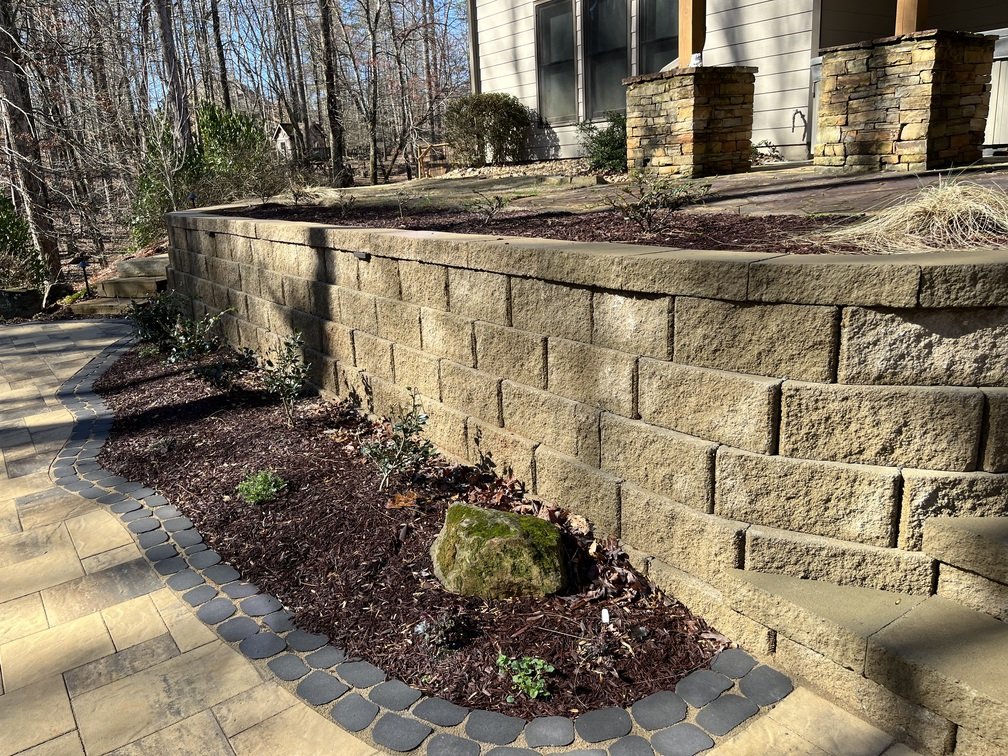
Retaining Walls in Cornelia
Transforming landscapes in Cornelia with expertly designed retaining walls addresses aesthetic and functional needs. Retaining walls provide essential support to prevent soil erosion and manage water runoff, making them an ideal solution for properties with sloped terrains. These structures enhance the usability of outdoor spaces by creating level areas for gardens, patios, and walkways.
A well-constructed retaining wall serves practical purposes and enhances a property's visual appeal. We can match the home's architectural style and surrounding landscape using natural stone, brick, or concrete blocks. This integration creates a cohesive look that enhances the overall beauty of the property.
Our professional team handles all elements of installation, from the initial design and site assessment to the final construction and finishing touches. This comprehensive approach provides that the retaining wall is durable and aesthetically pleasing, providing long-lasting benefits for the property. Contact our team today to explore retaining wall options to enhance the functionality and beauty of outdoor spaces in Cornelia.
Importance of Retaining Walls
Retaining walls have a crucial function in landscape management and property enhancement. They provide essential support for soil, especially on sloped terrains, preventing erosion and landslides. This structural support is vital for maintaining the stability of gardens, driveways, and other outdoor areas. Additionally, retaining walls help manage water runoff, reducing flooding and water damage to property.
Beyond their functional benefits, retaining walls enhance a landscape's aesthetic appeal. They create defined areas for planting, pathways, and patios, adding depth and visual interest to the outdoor space. Homeowners can create a cohesive look by choosing materials like natural stone, brick, or concrete to complement the existing architecture and landscaping.
Moreover, retaining walls increase the usability of outdoor spaces by creating level areas on uneven terrain, maximizing the available space for seating areas, gardens, and play zones. Overall, integrating retaining walls into a landscape design brings both practical and aesthetic advantages, contributing to the long-term value and enjoyment of the property.
Our Reviews

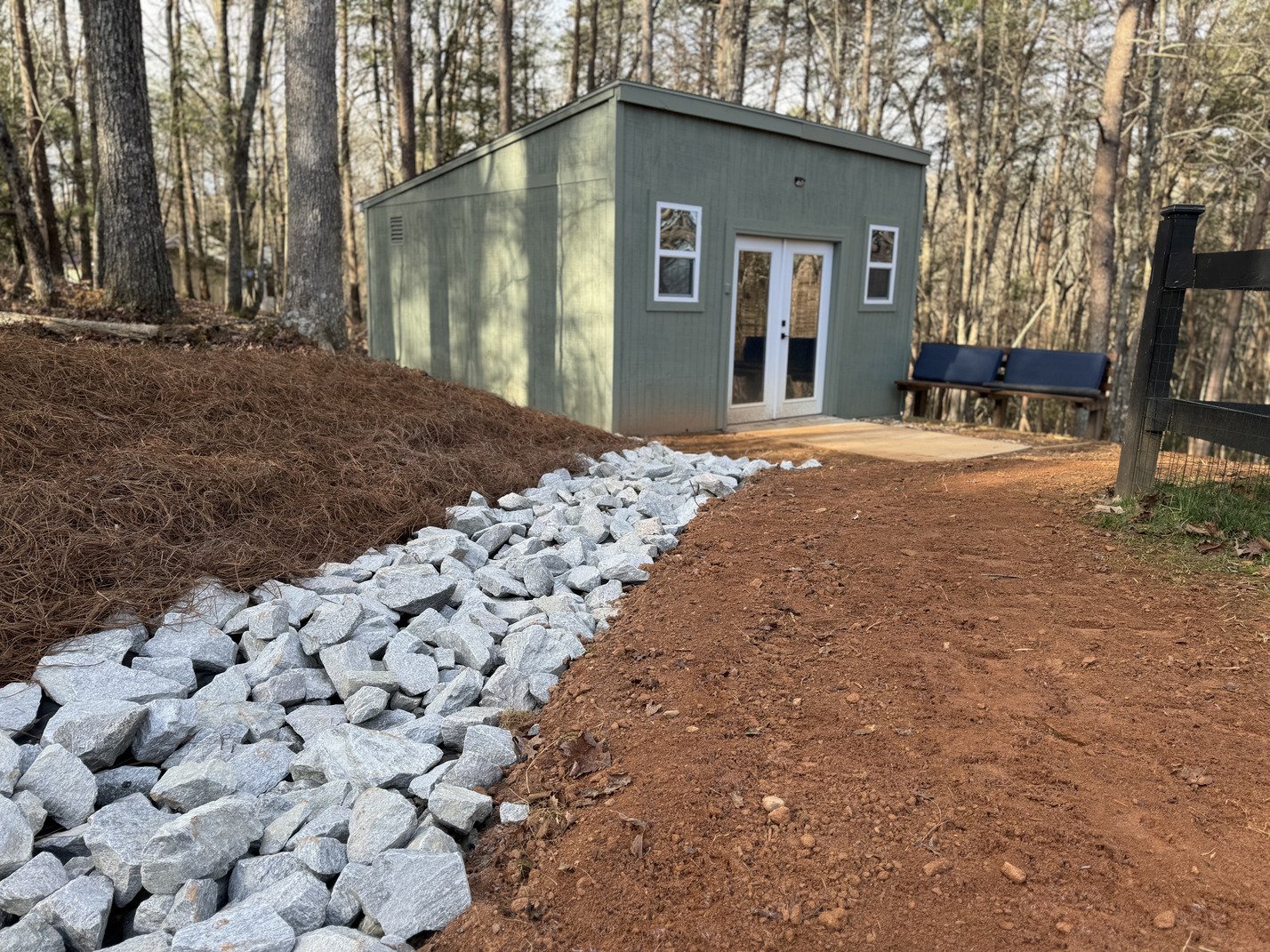
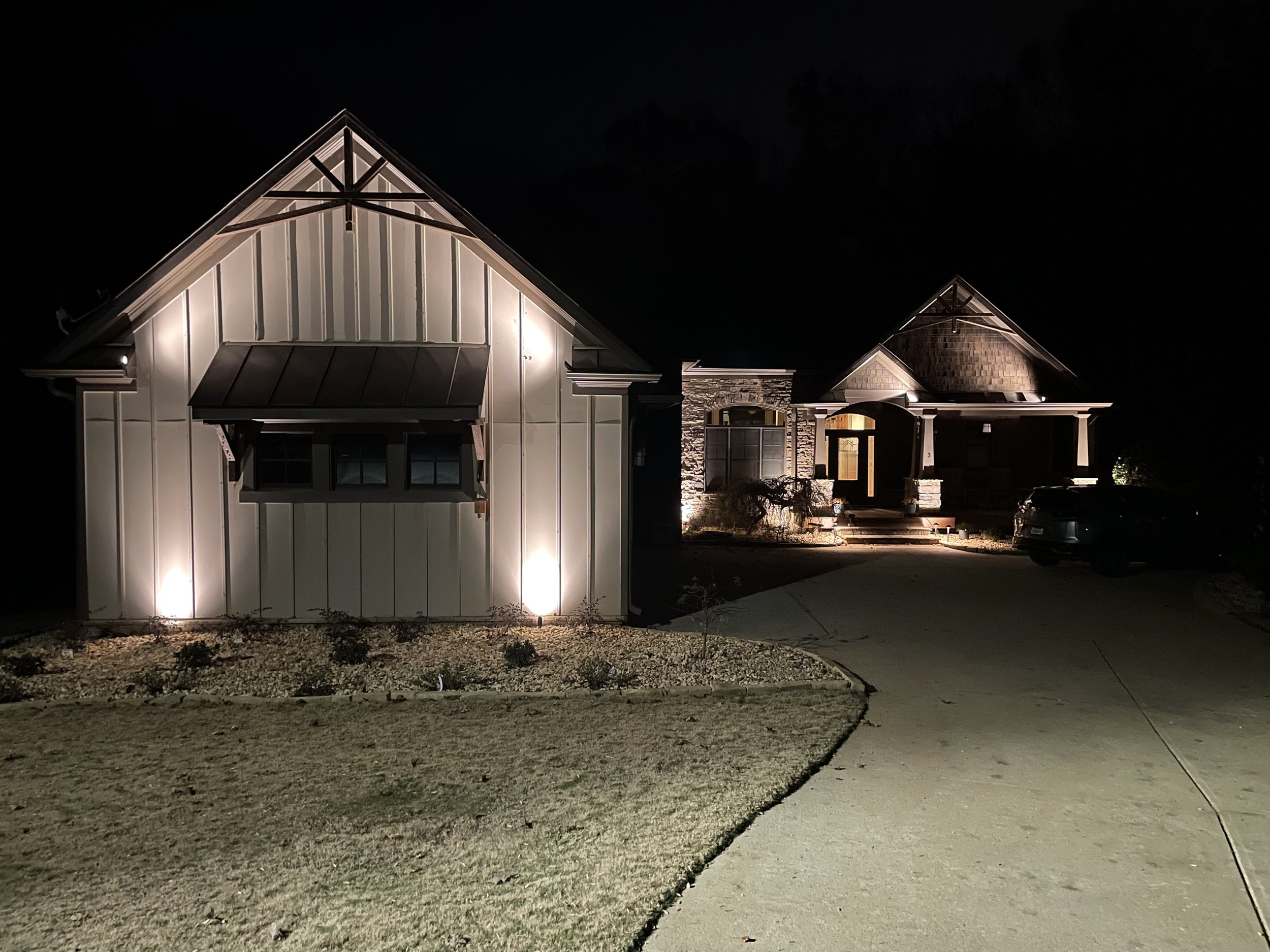
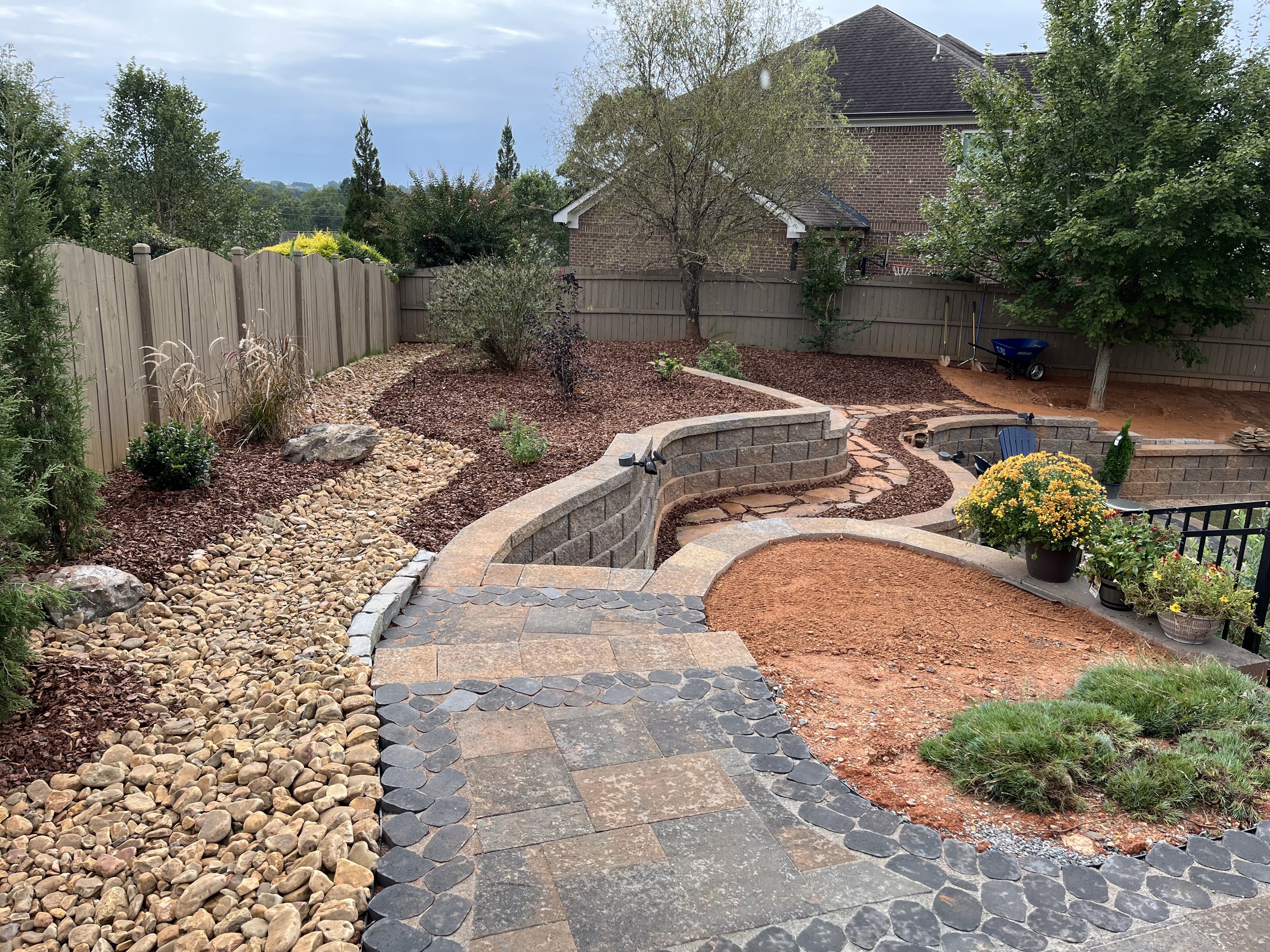
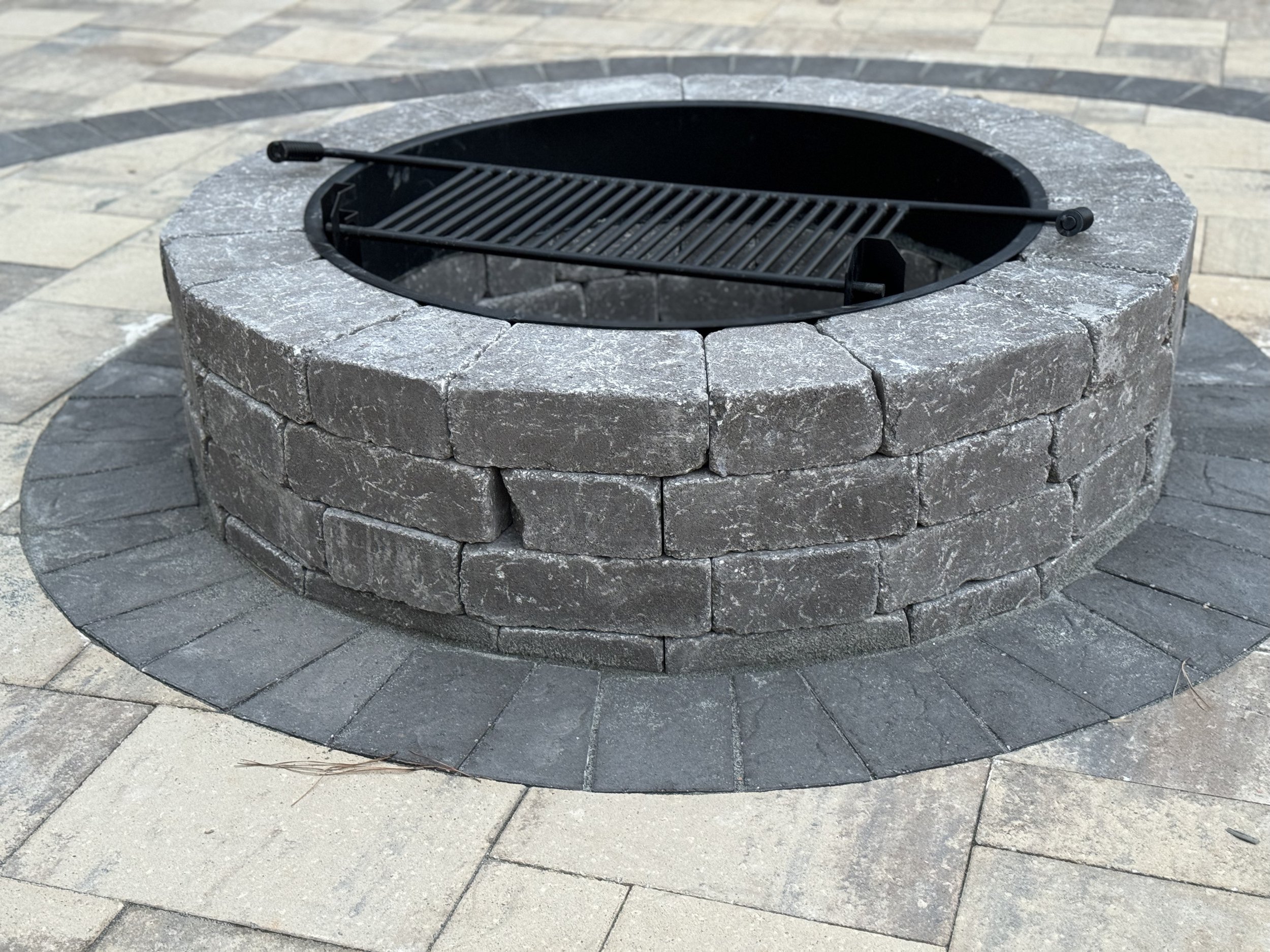
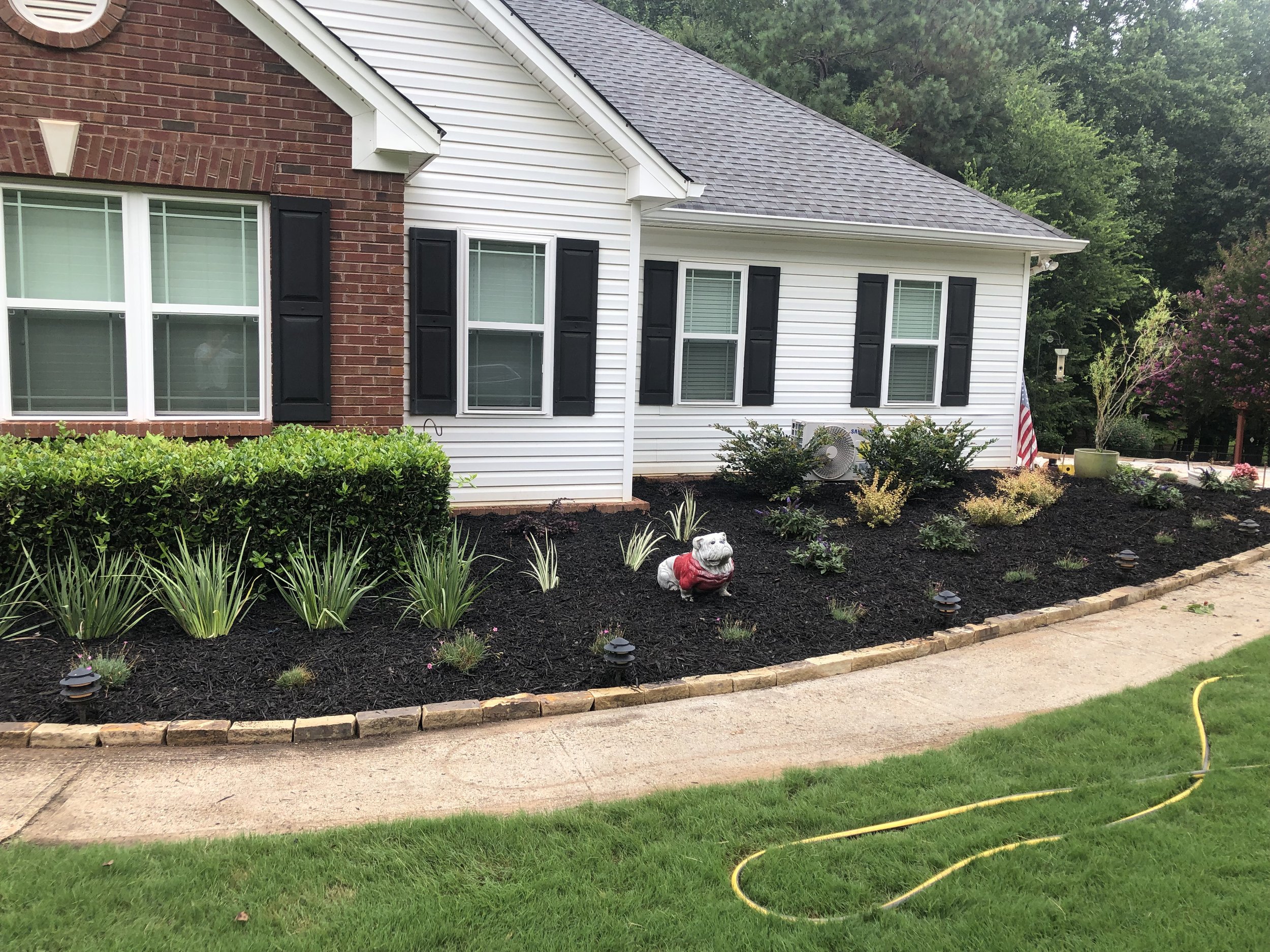
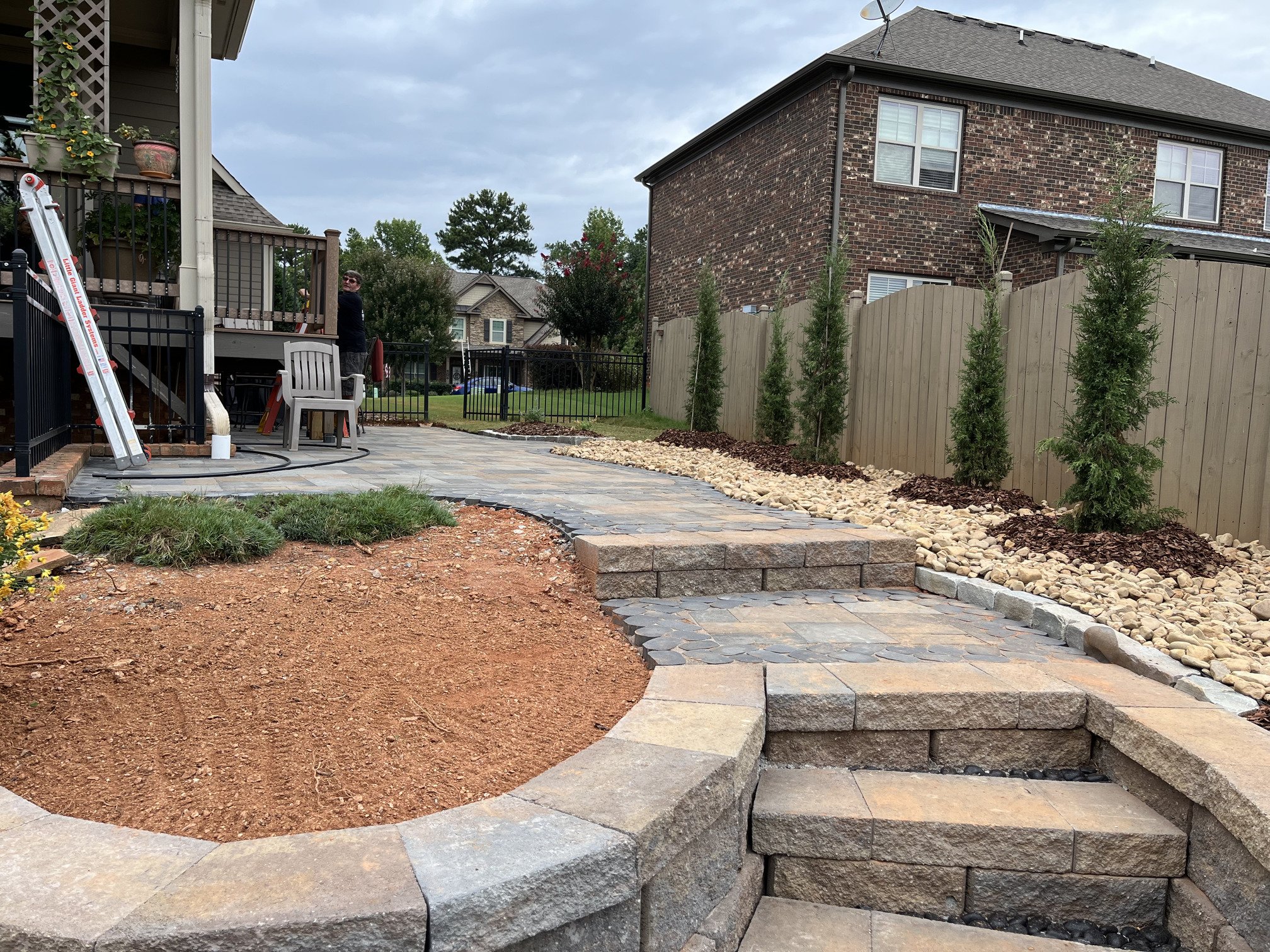
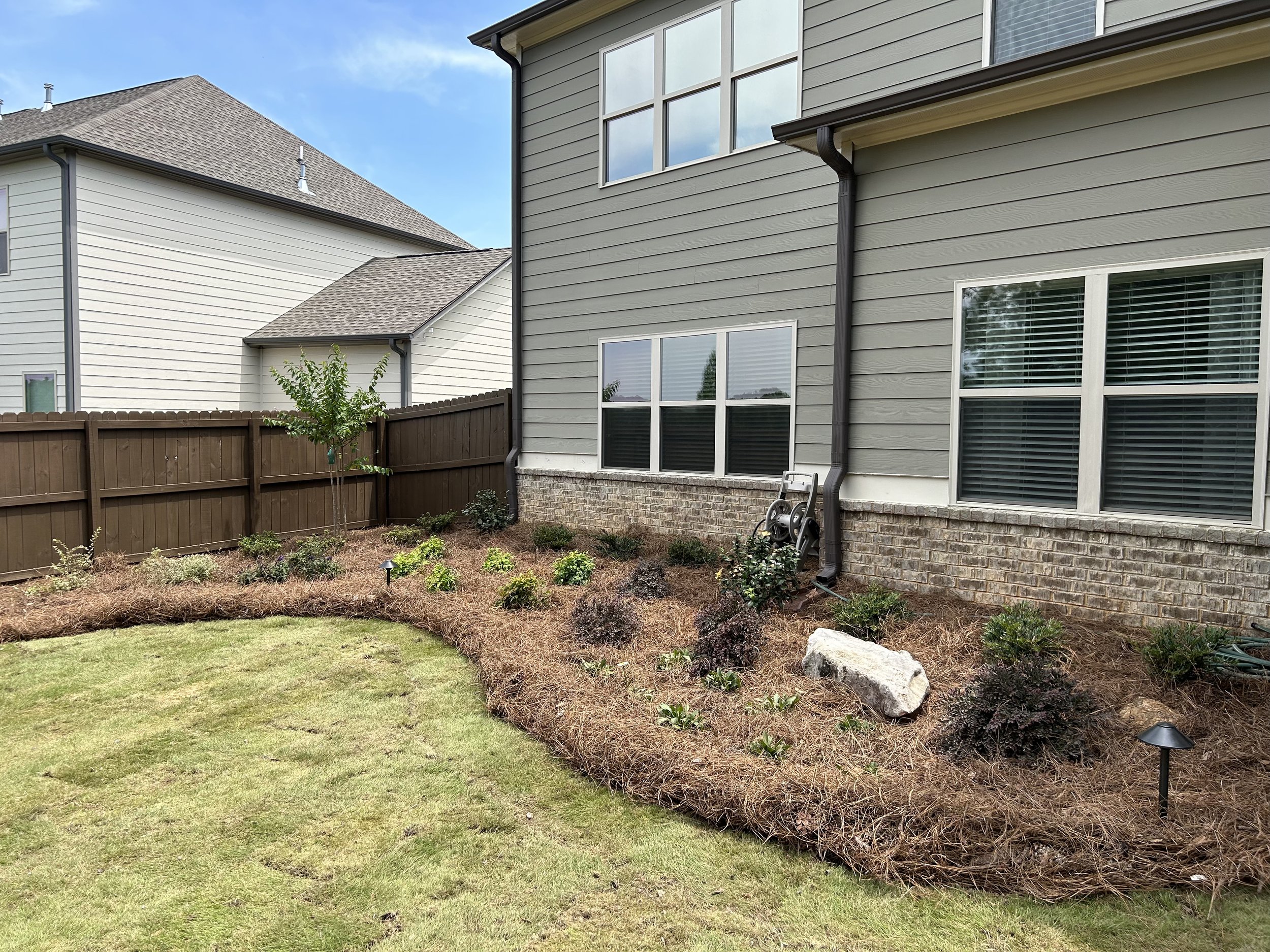
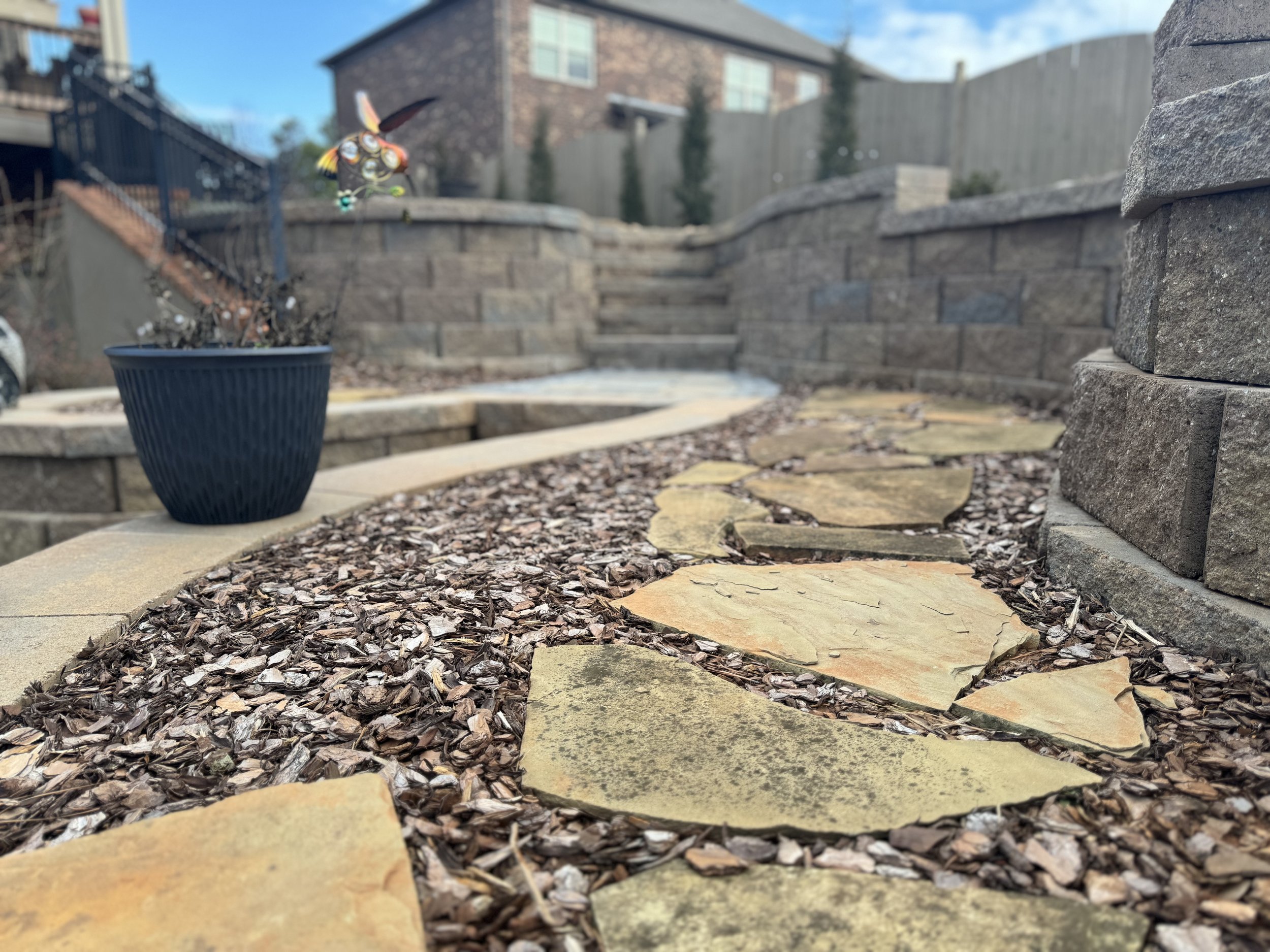

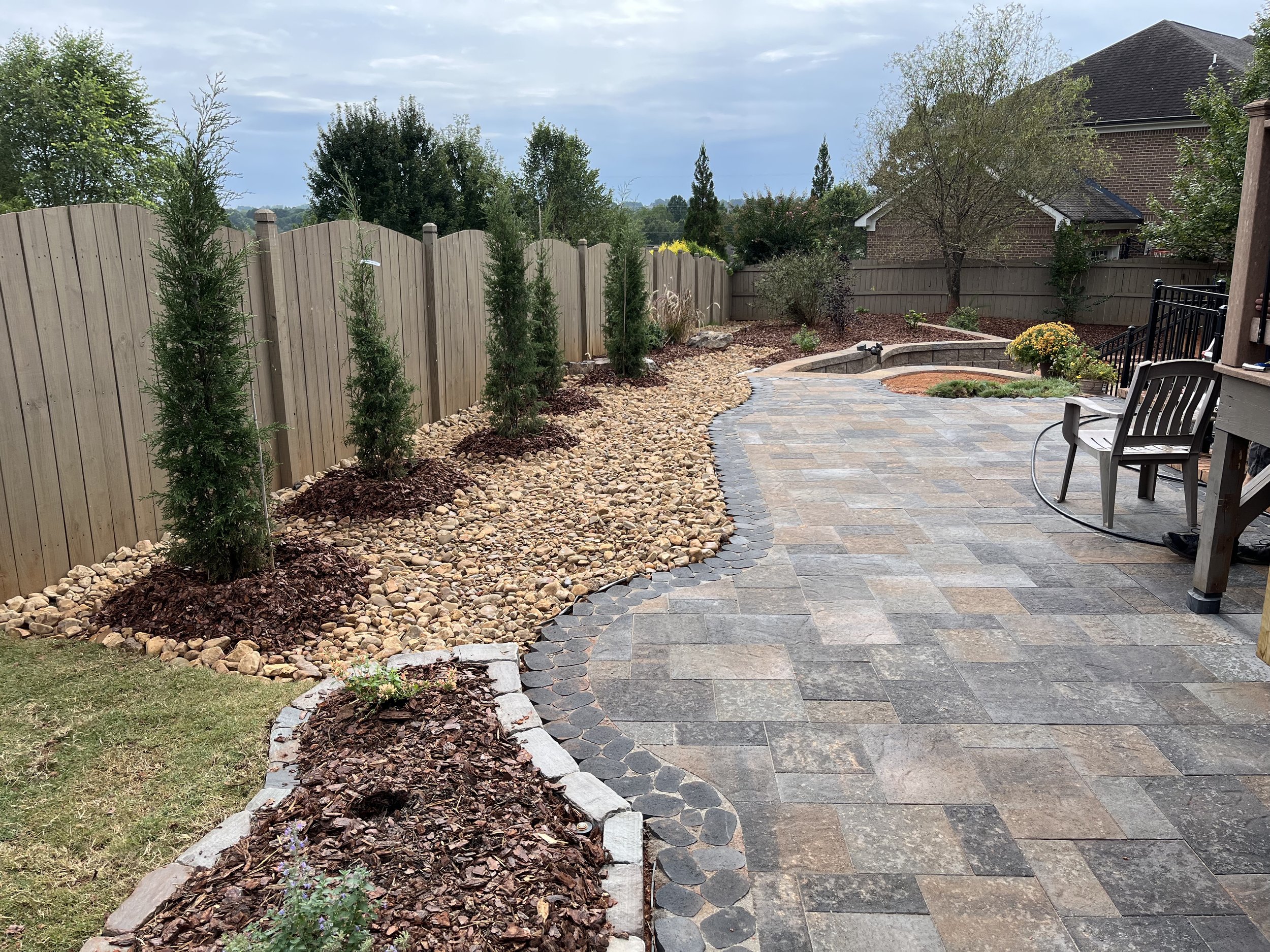
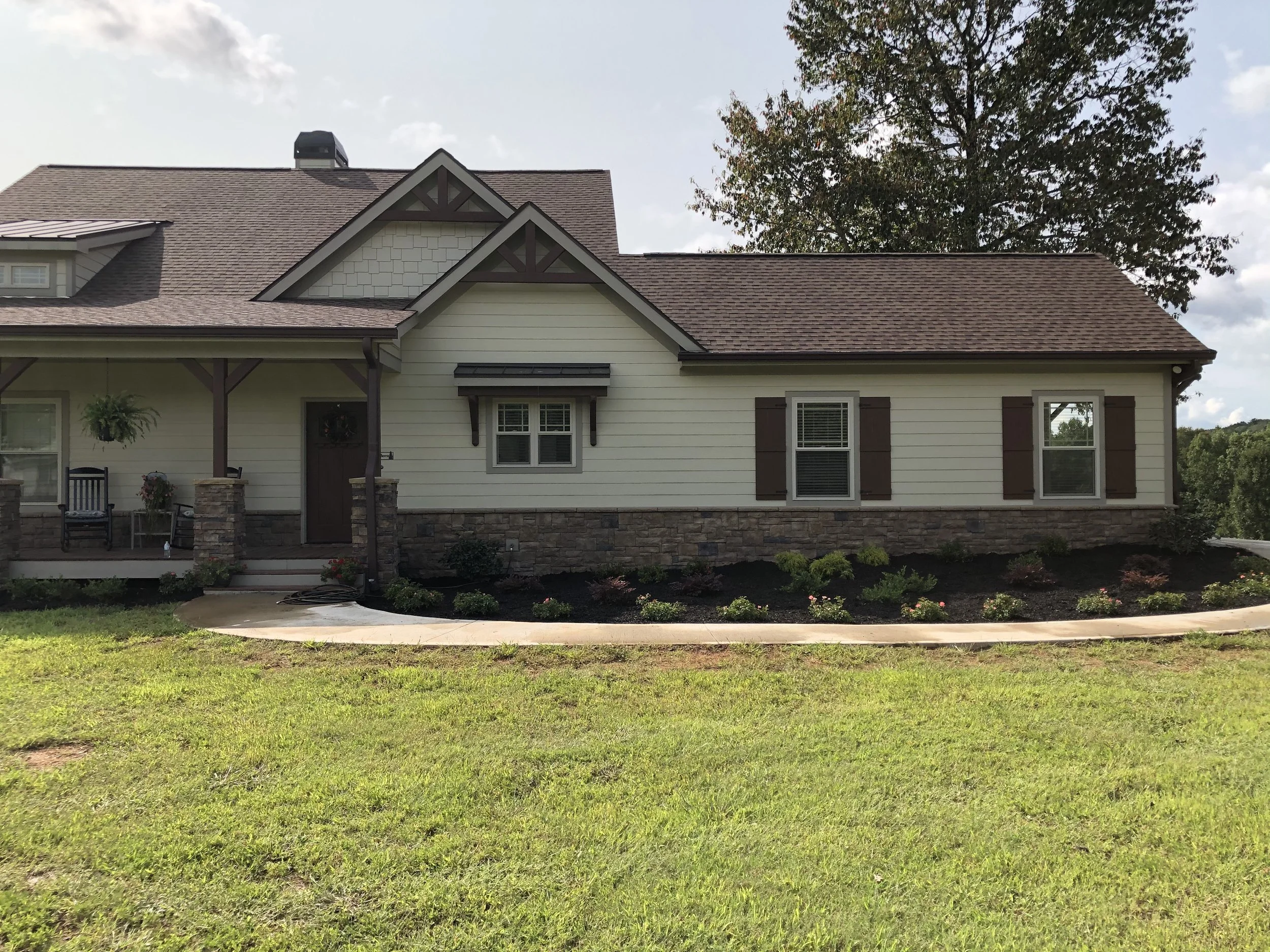
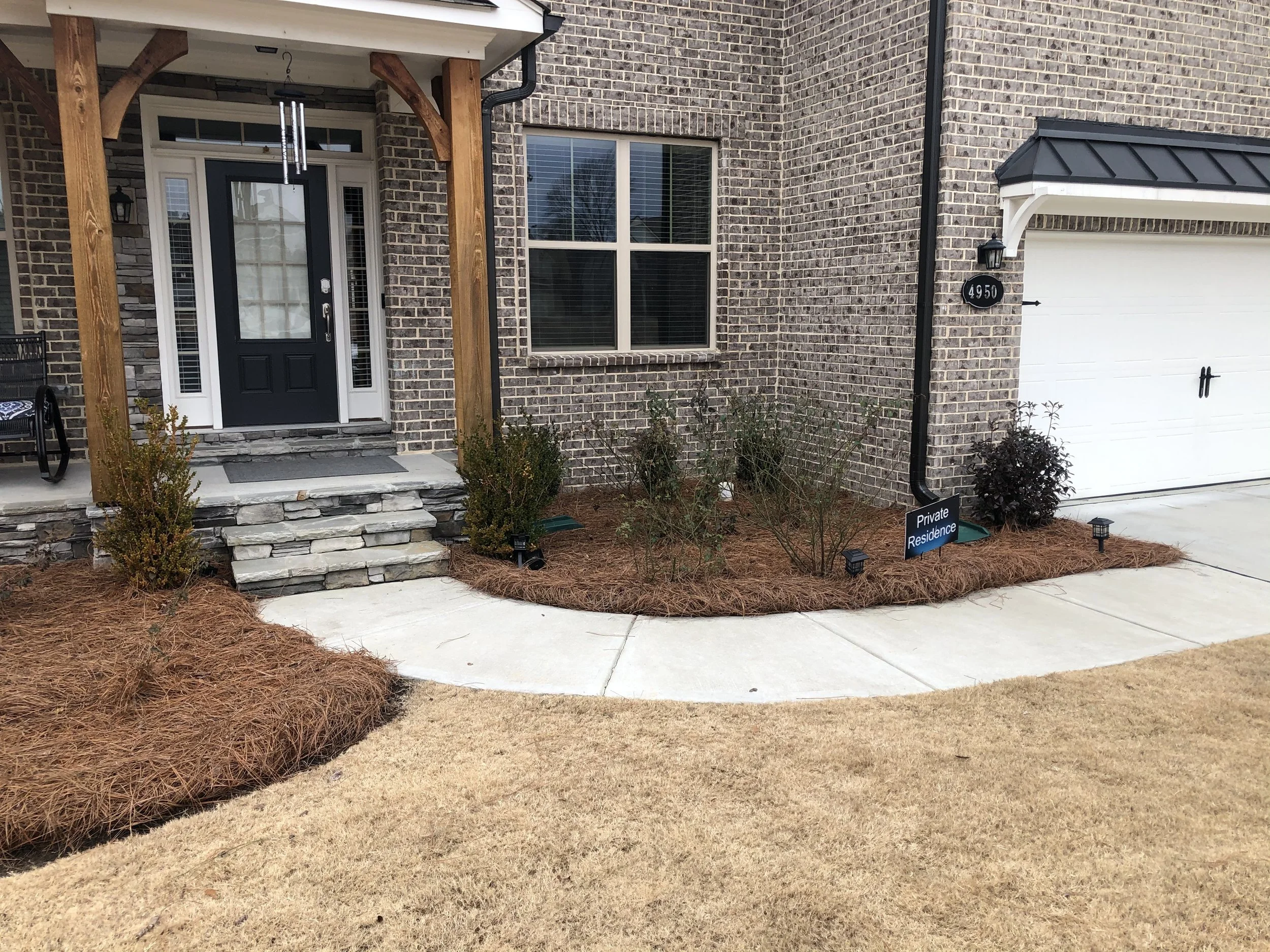
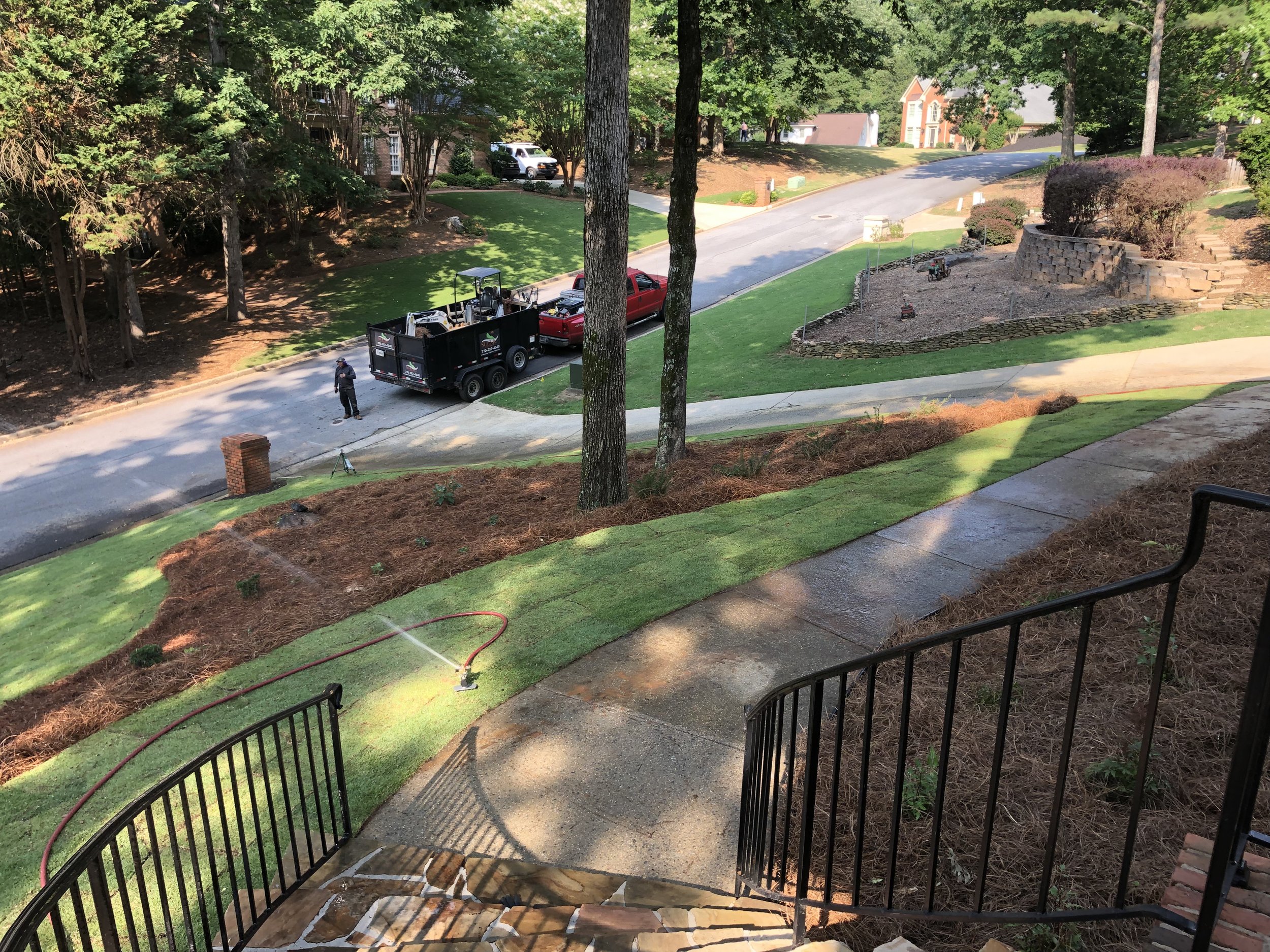
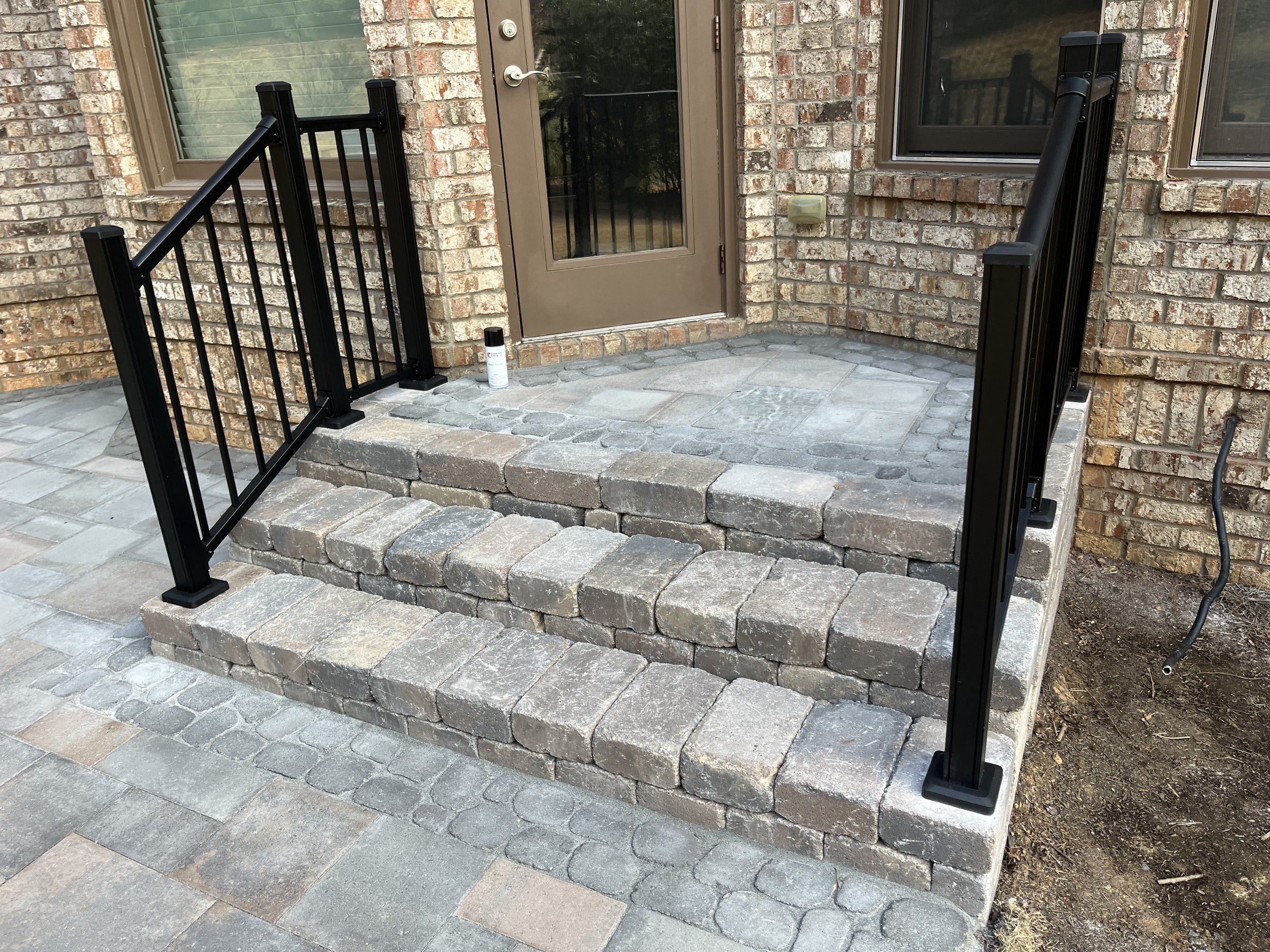
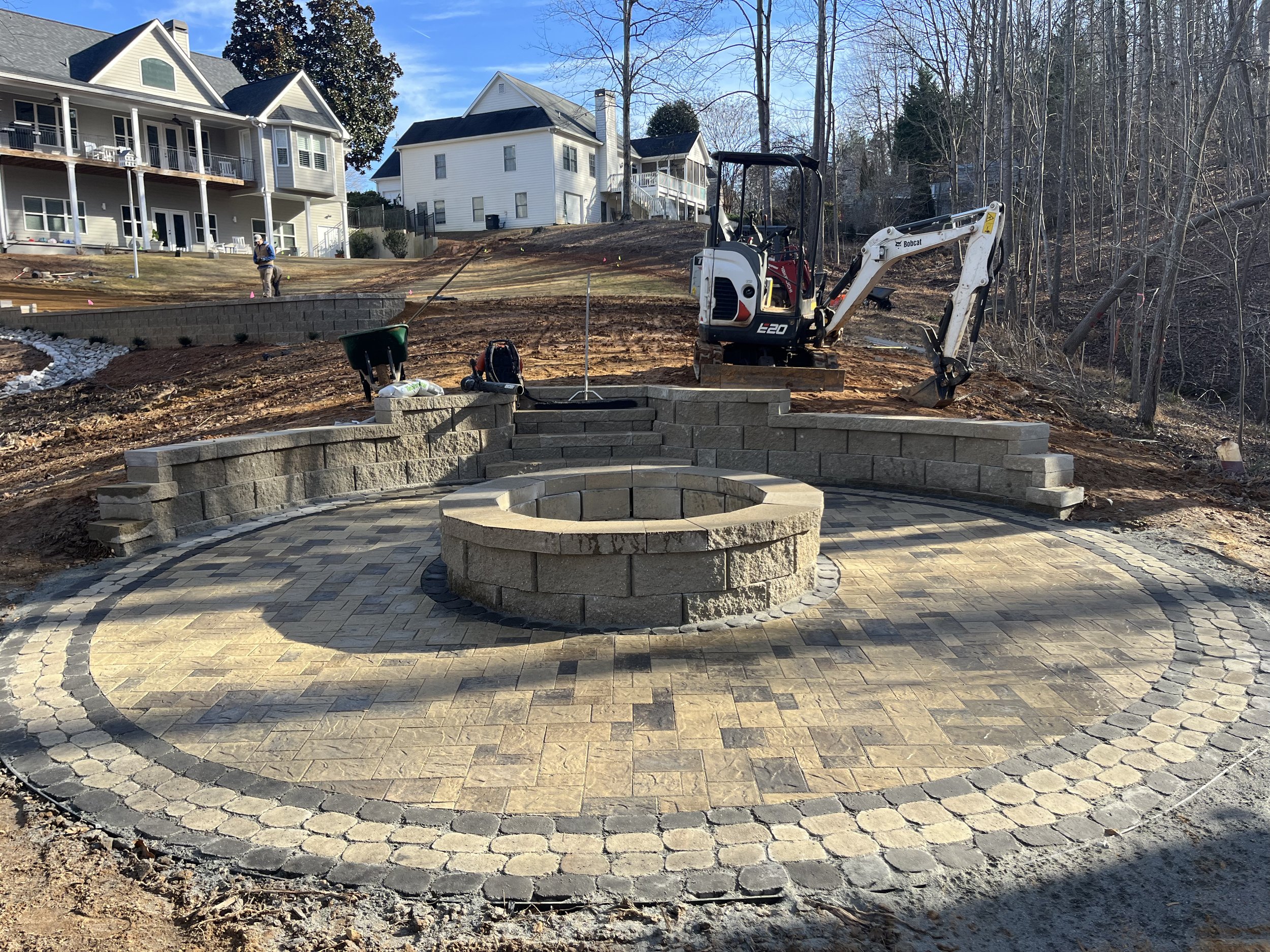
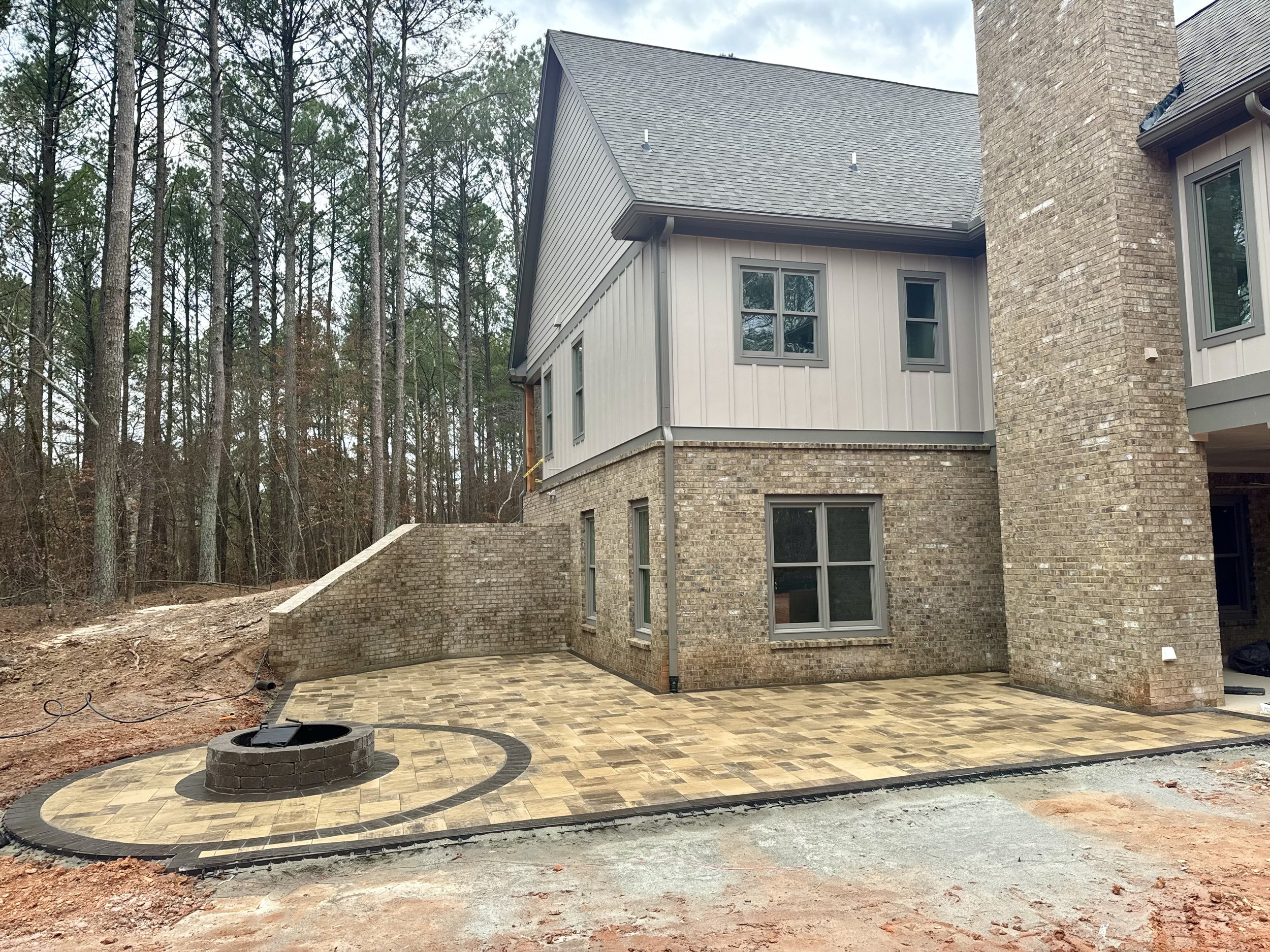

Retaining Wall Installation Process
Pre-construction site preparations: Site preparation involves clearing the site of vegetation, debris, and existing structures that may hinder the proposed installation. Proper marking and layout are performed to define the boundaries and dimensions of the retaining wall. Soil tests and evaluations are conducted to determine the best approach for construction, ensuring a solid foundation and effective drainage system are planned.
Excavation and foundation preparation: Excavation begins by digging a trench to the required depth, which will hold the foundation of the retaining wall. The trench is filled with compacted gravel or crushed stone to create a stable base. This foundation work is crucial for the stability and longevity of the retaining wall, providing a level surface for construction.
Installation of drainage systems: Water build-up behind the retaining wall can lead to wall failure, which proper drainage prevents. This step involves installing perforated pipes, gravel layers, and filter fabric to facilitate water flow away from the wall. These drainage systems help manage water efficiently, protecting the wall's structural integrity.
Construction of retaining wall structure: The wall construction begins by placing the first course of materials, such as blocks, stones, or concrete, directly on the prepared foundation. Each layer is carefully aligned and leveled, with subsequent courses staggered for additional strength. This methodical construction builds the wall to the desired height, ensuring durability and stability.
Backfilling and compaction: After the wall structure is built, backfilling is done using suitable soil and gravel. Layers of backfill are placed behind the wall and compacted to eliminate air pockets and provide solid support. This process helps the wall withstand lateral pressure from the soil and enhances its overall stability and performance.
Final touches: The installation concludes with finishing touches that enhance the wall's appearance and functionality. It may include installing capstones, applying sealants, and adding decorative elements. Landscaping around the wall, such as planting grass or shrubs, can further integrate the structure into the surrounding environment, creating a cohesive and attractive outdoor space.
Our Service Area in Georgia
Gainesville, Cornelia, Clarksville, Cleveland, Lula, Jefferson, Dawsonville, Dahlonega, Buford, Suwanee, Cumming, Duluth, Alpharetta, Commerce
Reach Out to Us Today!
Connect with us to start the journey toward a robust and aesthetically pleasing retaining wall. Our experts provide professional advice and tailored solutions for any project. We put customer satisfaction first and strive to deliver exceptional results that enhance their outdoor spaces' functionality and beauty.

